Don Fleming is a musician and producer who has had his hands in an amazing number of projects, mostly in the alt rock universe. As a musician, he was a member of the Velvet Monkeys, B.A.L.L., Gumball, and Half Japanese. As a producer, he has worked with Sonic Youth, Hole, Teenage Fanclub, Alice Cooper, The Dictators, The Posies, Screaming Trees, and more. Don recently released a cool EP called Don Fleming 4 which includes contributions from Sonic Youth’s Kim Gordon.
This interview was conducted by email, with answers received on 10/10/11.
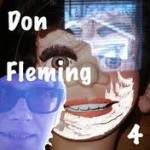
Jeff Moehlis: I’ve been enjoying your new release Don Fleming 4. Can you tell me how this came together?
Don Fleming: I’ve been very lazy about recording anything new. I just can’t be bothered for the most part. I have a basic studio set-up at home and have slowly been doing collaborations with friends, these are the first ones that were ready. At the rate I’m going it would be another few years to put together a whole album, so I thought I’d put these out as an EP.
JM: You recently re-released the Velvet Monkeys’ first album, Everything Is Right. For the un-initiated, could you give a quick summary of the the life and times of the Velvet Monkeys?
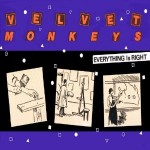
DF: We started in 1981 in Washington D.C. as a 3 piece- me, Elaine Barnes and Steven Soles. By the end of that year we added Jay Spiegel on drums, and released Everything is Right in 1982. The band went through many personnel changes over the years, but Jay and I have remained the constants. We put out 5 albums and 4 singles between 82 and 98.
JM: I understand that more Velvet Monkeys re-releases are in the pipeline. What is the timeline for that?
DF: I think I’ll follow up with the “Future” album, probably by the end of the year. I’m doing a lot of restoration of the original tapes, so I’m not in any big hurry, I hope to get 2-3 more VM titles out next year.
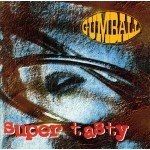
JM: Several works by your band Gumball were produced by Butch Vig. What was that like, especially considering that you’re a notable producer yourself? And what was your “major label experience” like with Gumball?
DF: Working with Butch was fantastic. He’s very open to ideas and has such a great sensibility. When I’m doing solo stuff I like to produce it, but for a band project I really want to have someone else to get that kind of feedback from. We went into the major label thing knowing that it wouldn’t last, but that in the meantime we could finally have some decent budgets for making our albums. At that point we had friends who worked at the label, so it was ok, and they left us alone for the most part and let us record and make videos (with Dave Markey) the way that we wanted to.
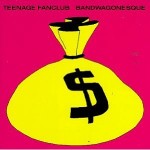
JM: One of the acclaimed albums that you produced was Teenage Fanclub’s Bandwagonesque. What are some memories of the making of that album?
DF: The band was so much fun to work with. We had a great time getting the guitar sounds, Norman and Raymond had some nice vintage gtrs and we discovered on the first day at the studio that they had two Vox amps that had belonged to Status Quo! So we got some amazing tones. There was an in-house kitchen with a nice little old lady who would whip up these amazing BLT’s whenever we need them, so THAT’s a nice memory.
JM: The conventional wisdom is that Bandwagonesque was strongly influenced by Big Star. Do you see it that way?
DF: I saw the band as way more Badfinger than Big Star, but I think part of that vibe was that we recorded Chilton’s “Free Again” and the press stuck the Big Star tag on it.
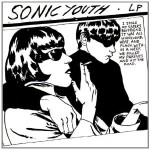
JM: Another album you were involved with was Goo by Sonic Youth, including the demos. How do you characterize your contributions to that album?
DF: J Mascis and I recorded the “demos” at Waterworks on 14th Street.. I think we had the illusion that it might end up being the final version, but the label wanted a proper producer in a bigger studio. SY asked the two of us to work with them and Nick Sansano, who had engineered the Daydream Nation album. J and I weren’t there for all of it, J was there primarily to help with tracking the drums, and I was there to mostly help with recording the vocals. Public Enemy was in the other room at Greene Street Studios working on Fear of A Black Planet, it was really cool to watch Eric “Vietnam” Sadler at work, he seemed to be the key to their production, he was there 24/7. I encouraged Chuck D. to improv some stuff during his takes on “Kool Thing” and that worked out pretty well.
JM: That was Sonic Youth’s first major-label release. Do you think that fact changed their approach to writing or recording at all?
DF: Maybe slightly. It was a fairly natural progression from Daydream Nation, but I do think that J and I encouraged Thurston in particular to let the songs ROCK a bit more.
JM: You have had a strong affiliation with Sonic Youth, having assisted with several of their albums, and done other projects with Thurston Moore and Kim Gordon. How would you describe Sonic Youth’s place in the history/world of rock music?
DF: The thing I always have admired about them is that they have promoted and encouraged so many other bands, not just inspired them, but actively championed many bands by asking them to open shows and promoting them to labels.
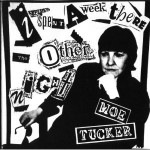
JM: I think it’s particularly cool that you played on Maureen Tucker’s I Spent a Week There the Other Night, which to me is one of the better Velvet Underground solo albums. What was it like playing with her?
DF: Moe is a super cool person to hang with and I was really honored to work with her. It was cool to discover that she was a fan of Half Japanese, but also that she has a real passion for the music that inspired her, especially Bo Diddley.
JM: You also played with Dinosaur Jr. and with Half Japanese. How would you compare those to with other musical projects you’ve been involved with?
DF: Half Japanese really opened my mind to improvising while playing and recording, and also to playing for the pure joy of it. Dino Jr. was an interesting moment in time, Jay Spiegel and I were in between our time with B.A.L.L. and Gumball, and really enjoyed playing with Murph and J. The rehearsals were wacky, J would end up on drums, so there would be 3 drummers and me on guitar.
JM: With Kim Gordon, you co-produced Hole’s debut album Pretty on the Inside. What was it like working with Courtney Love at that time?
DF: I loved that band, they were all true Hollywood misfits. We recorded and mixed the record in a week, so there was no time to play rock star. Courtney put 110% into it and I never doubted that she would go far. I don’t think she had even met Kurt yet. I felt that she was truly putting it all on the line, and that her lyrics and performance were really true to her life.
JM: You also co-produced a track on The Dictators’ under-appreciated album D.F.F.D. Any good Dictators stories?
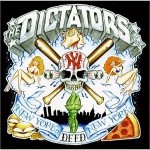
DF: That was such a trip because I had listened to the first two albums endlessly as a teenager. It was similar to working with the Smithereens, they were kind of like a bunch of old ladies who had been playing bridge together for 30 years and knew just how drive each other crazy. Funny in retrospect, but some tense moments at the time! Andy is quite the perfectionist and would make me the messenger when he wanted to deliver his complaints to Handsome Dick. So I remember at least one night where Handsome Dick unloaded a verbal barrage and left the studio in a huff. But then he would show back up and we would try it again.
JM: Given your alt rock resume, it seems a bit of a surprise that you produced some tracks on Alice Cooper’s album The Last Temptation. How did that come about, and what was it like working with Cooper?
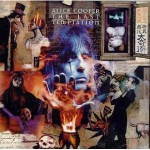
DF: I had just worked with Screaming Trees and Bob Pfeifer was the A & R guy. So he brought me in on that one. Alice was AMAZING to work with. The way I approached production was really based on that early 70’s sound that I grew upon, so I was more about getting that classic sound than trying to “modernize” him for the grunge age. I asked him to add harmonica to one of the songs, which he hadn’t done in many years. And Alice has SO many amazing stories and I was constantly asking him about his time at the Troubadour with Lennon and Nilsson and hanging with Iggy. Nilsson had a heart attack while we were recording and Alice sent him a giant chocolate heart! He has a great sense of humor. One of my fav moments was when we were sitting at the mixing desk and we heard an enormous lightning strike outside, just as he looked at me in wide eyed shock all the lights went out. Being a windowless room, everything went black. So it was a fairly surreal moment.
JM: What advice would you give to an aspiring musician?
DF: Get an MBA. Too many musicians think that if they know too much about the business they are sell-outs, but in reality “the man” wants them to think that way so they can be endlessly taken advantage of. That’s why most musicians barely make a living, have no health care, no retirement plans, no salaries. So my advice is to get a real job and play music because you like to, put the stuff out yourself and avoid “the man.”
JM: What are your plans, musical or otherwise, for the near future?
DF: I’ve been transferring and restoring all my original master tapes from the 70’s and 80’s, and I’ll continue putting together re-releases and releases of previously unpublished stuff. I did a live show in September, mainly to be on the bill with Brute Force, the infamous artist form Apple Records. I like doing one-off type projects, I recently did some recording and a show with The Tabby Chinos (Bob Pfeifer and Cynthia Sley) and I just played on some tracks for Ed Rogers and his new album Porcelain. My main gig for the last 10 years has been working at the Alan Lomax Archive, where I am Executive Director. I’m doing archival consultation as well and worked on the collections of Hunter S. Thompson and Ken Kesey, for the documentaries that director Alex Gibney did on each of them.
JM: Where are you responding from?
DF: Earth.

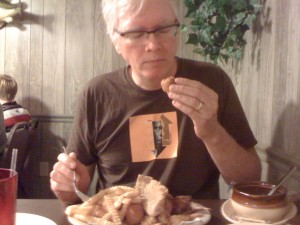
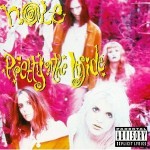
I used to play in a band in S. Fla, where Don started his musical ventures before making it with the Velvet Monkeys, I think it was before. Anyway, I later played in a band called Used People, some how he and another fellow who ran sound for us, slipped in a tape at a live show. Would have pissed me off back then, but it was the best thing that could have happened to us. Especially the other players. We put out a LP with four songs, but only 2000 of them. Well 25 years later, I have nothing to show for that band, and I get a message from Don telling me he has this live tape and has remastered one of the song, but the tape is pretty good. Sends it to me, asks for nothing in return, and all I can do is say thank you Don. I’m hoping he’ll be interested in helping me with my new project, which is 20 years later, but worth the wait. Incredible job Don on Used People live mix from New Wave Club in 1981. Just incredible! I will send your re-mix of oh Kimmy out to Fla radio stations which have been asking me for copies of Used People. I would have never thought people even would have remembered the band, we were only together a year or so, let alone want to hear us again!